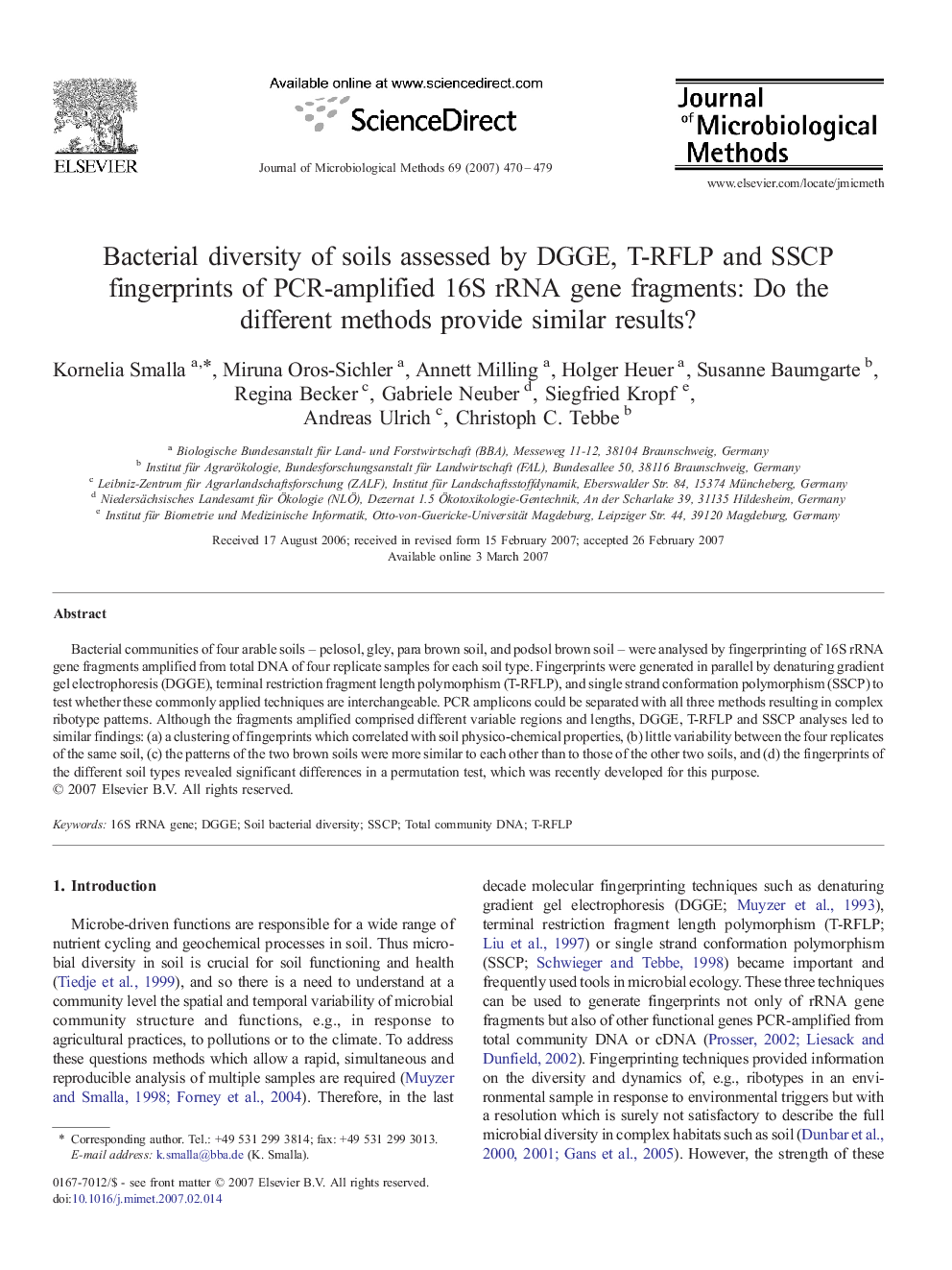| Article ID | Journal | Published Year | Pages | File Type |
|---|---|---|---|---|
| 2091793 | Journal of Microbiological Methods | 2007 | 10 Pages |
Bacterial communities of four arable soils – pelosol, gley, para brown soil, and podsol brown soil – were analysed by fingerprinting of 16S rRNA gene fragments amplified from total DNA of four replicate samples for each soil type. Fingerprints were generated in parallel by denaturing gradient gel electrophoresis (DGGE), terminal restriction fragment length polymorphism (T-RFLP), and single strand conformation polymorphism (SSCP) to test whether these commonly applied techniques are interchangeable. PCR amplicons could be separated with all three methods resulting in complex ribotype patterns. Although the fragments amplified comprised different variable regions and lengths, DGGE, T-RFLP and SSCP analyses led to similar findings: (a) a clustering of fingerprints which correlated with soil physico-chemical properties, (b) little variability between the four replicates of the same soil, (c) the patterns of the two brown soils were more similar to each other than to those of the other two soils, and (d) the fingerprints of the different soil types revealed significant differences in a permutation test, which was recently developed for this purpose.
